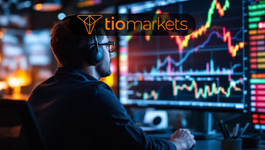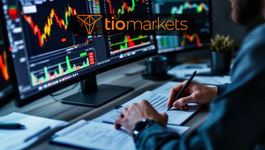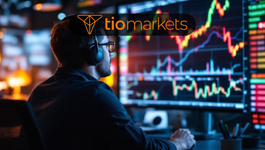Economic Recovery: What It Is and Its Types | TIOmarkets
BY TIOmarkets
|junio 7, 2024Economic recovery represents a period of increasing business activity signaling the end of a recession. Much like the dawn after a long night, economic recovery brings optimism and growth back to the market. This article delves into the essence of economic recovery, its indicators, and the various types that economies around the world may experience.
Understanding Economic Recovery
Economic recovery is a phase of the business cycle following a recession, characterized by an increase in GDP, employment, and consumer spending. It is a period when the economy transitions from negative to positive growth, restoring confidence among investors, businesses, and consumers.
Characteristics of Economic Recovery
Economic recovery is marked by several key characteristics. Firstly, there is a noticeable increase in industrial production as businesses ramp up operations to meet renewed consumer demand. Secondly, employment rates improve as companies begin hiring again, reducing the unemployment rate. Lastly, there's an uptick in retail sales, indicating restored consumer confidence and spending.
Another significant aspect of economic recovery is the improvement in housing markets, with increased home sales and construction activities. Additionally, stock markets often rebound during this phase, reflecting investor optimism about future economic prospects.
Indicators of Economic Recovery
To gauge whether an economy is in recovery, economists look at various indicators. These include GDP growth rates, employment figures, consumer spending data, and manufacturing activity. A consistent improvement in these indicators suggests that the economy is on the path to recovery.
Interest rates set by central banks also serve as a critical indicator. During a recovery, central banks may start to increase rates to prevent the economy from overheating. Conversely, sustained low rates might indicate ongoing support for the still-recovering economy.
Types of Economic Recovery
Economic recoveries can take various forms, each with distinct characteristics and implications for the economy. Understanding these types can help in predicting the trajectory of recovery and making informed decisions.
V-shaped Recovery
A V-shaped recovery is characterized by a sharp decline in economic activity followed by a swift and robust rebound. This type of recovery is typically short-lived and indicates a strong resurgence of economic growth. Consumer confidence quickly returns, leading to significant increases in spending and investment.
The primary advantage of a V-shaped recovery is the rapid restoration of the economy to its pre-recession state. However, it may also lead to inflationary pressures if the growth is too rapid.
U-shaped Recovery
U-shaped recoveries are marked by a prolonged downturn before the economy begins to improve. This type of recovery can last for several quarters or even years, with a gradual return to pre-recession levels of economic activity.
During a U-shaped recovery, unemployment rates may remain high for an extended period, and consumer spending is slow to recover. The advantage of this recovery type is that it allows for more sustainable growth, reducing the risk of inflation.
W-shaped Recovery
A W-shaped recovery, also known as a double-dip recession, occurs when the economy begins to improve but then dips into recession again before finally recovering. This pattern creates a "W" shape in economic data charts.
This type of recovery can be particularly challenging for businesses and consumers, as the initial signs of improvement may lead to increased spending and investment, only for the economy to contract again. It underscores the importance of cautious optimism and prudent financial planning during uncertain times.
L-shaped Recovery
An L-shaped recovery is the most prolonged and least favorable type of economic recovery. It occurs when an economy experiences a steep decline in activity without a significant rebound for an extended period. This scenario often results in long-term unemployment and stagnant economic growth.
The L-shaped recovery highlights the challenges of recovering from deep economic downturns and the need for substantial policy interventions to stimulate growth.
Government Interventions in Economic Recovery
During periods of economic recovery, governments often implement various interventions to support and expedite the process. One common intervention is fiscal stimulus, where governments increase spending on infrastructure projects, social programs, and other initiatives to boost economic activity.
Monetary policy is another tool used by central banks to aid in economic recovery. Central banks may lower interest rates to encourage borrowing and spending, or engage in quantitative easing to inject liquidity into the financial system.
Government interventions can also include regulatory changes to facilitate business growth, tax incentives to stimulate investment, and trade policies to enhance international commerce. These interventions aim to create a conducive environment for economic recovery and sustainable growth.
Challenges in Economic Recovery
While economic recovery is a positive phase for any economy, it is not without its challenges. One common challenge is the risk of inflation, especially in rapid recovery scenarios like V-shaped rebounds. Inflation can erode purchasing power and destabilize the economy if not managed effectively.
Another challenge is the uneven distribution of recovery benefits, where certain sectors or demographics may lag behind in the recovery process. This disparity can lead to social and economic inequalities, requiring targeted interventions to ensure inclusive growth.
Global economic interdependencies also present challenges during recovery, as disruptions in one economy can have ripple effects across the world. Coordinating recovery efforts and policies on a global scale is essential to foster a synchronized and sustainable economic recovery.
Technological Advancements and Economic Recovery
In the digital age, technological advancements play a significant role in shaping economic recovery strategies. Technologies such as artificial intelligence, big data analytics, and automation have the potential to enhance productivity, streamline operations, and drive innovation in various industries.
During economic recovery, businesses that leverage technology effectively can gain a competitive edge, adapt to changing market dynamics, and capitalize on emerging opportunities. Digital transformation initiatives, cloud computing solutions, and e-commerce platforms are examples of technological tools that can support businesses in their recovery journey.
Furthermore, technological advancements facilitate remote work arrangements, enabling businesses to maintain operations during challenging times such as the COVID-19 pandemic. The adoption of digital communication tools and virtual collaboration platforms has become essential for business continuity and resilience in the face of economic disruptions.
Sustainable Practices in Economic Recovery
As economies strive for recovery, there is a growing emphasis on integrating sustainable practices into business operations and policy frameworks. Sustainable development goals, environmental conservation efforts, and social responsibility initiatives are gaining prominence as essential components of economic recovery strategies.
Businesses are increasingly adopting sustainable practices such as renewable energy adoption, waste reduction measures, and ethical supply chain management to minimize their environmental footprint and contribute to a greener economy. Governments are also implementing policies that promote sustainability, including carbon pricing mechanisms, green infrastructure investments, and biodiversity conservation programs.
By incorporating sustainable practices into economic recovery plans, stakeholders can build resilient and environmentally conscious economies that prioritize long-term prosperity and well-being for current and future generations.
Conclusion
Economic recovery is a critical phase in the business cycle, signaling the end of a recession and the beginning of growth. While the path to recovery can vary, understanding its types and characteristics helps in navigating the complexities of post-recession economies. As the world economy continues to evolve, staying informed and adaptable is key to thriving in the ever-changing landscape of global finance.
At TIOmarkets, we are committed to providing our clients with the insights and tools needed to navigate the financial markets effectively. Whether you're a seasoned trader or new to the world of Forex trading, our platform offers a robust suite of services to support your trading journey.
Start Your Journey to Economic Recovery with TIOmarkets
As you look forward to capitalizing on the opportunities presented by economic recovery, TIOmarkets is here to empower your trading ambitions. With over 170,000 accounts opened across more than 170 countries, our platform is designed to help you trade over 300 instruments across 5 markets, including Forex, indices, stocks, commodities, and futures, all with low fees. Enhance your trading skills with our comprehensive educational resources and step-by-step guides. Ready to take the next step? Create a Trading Account today and join the ranks of successful traders navigating the post-recession markets.

Risk disclaimer: CFDs are complex instruments and come with a high risk of losing money rapidly due to leverage. You should consider whether you understand how CFDs work and whether you can afford to take the high risk of losing your money. Never deposit more than you are prepared to lose. Professional client’s losses can exceed their deposit. Please see our risk warning policy and seek independent professional advice if you do not fully understand. This information is not directed or intended for distribution to or use by residents of certain countries/jurisdictions including, but not limited to, USA & OFAC. The Company holds the right to alter the aforementioned list of countries at its own discretion.
Join us on social media

Behind every blog post lies the combined experience of the people working at TIOmarkets. We are a team of dedicated industry professionals and financial markets enthusiasts committed to providing you with trading education and financial markets commentary. Our goal is to help empower you with the knowledge you need to trade in the markets effectively.
Related Posts





